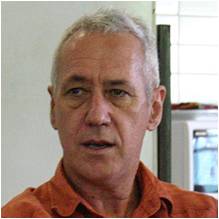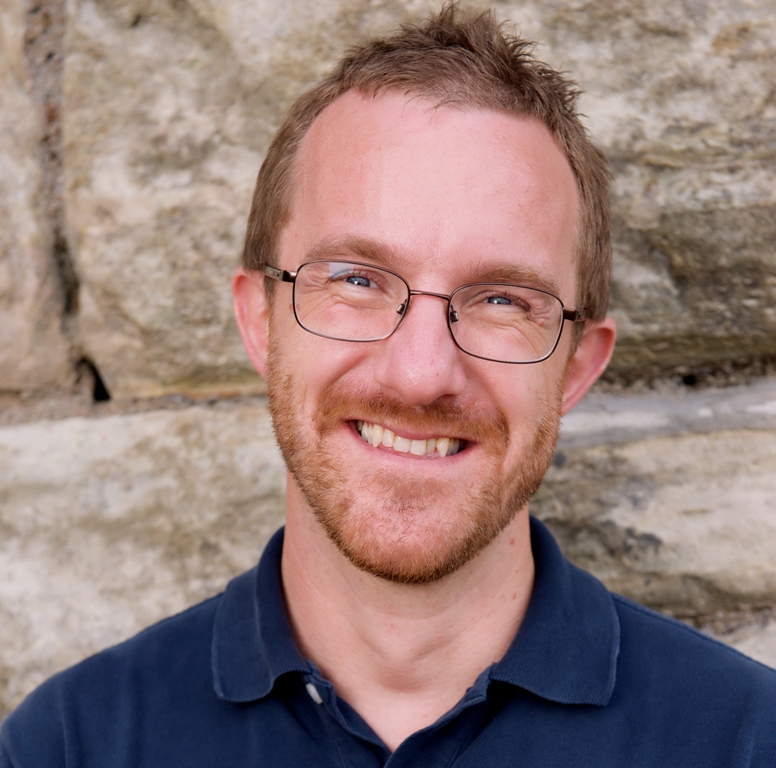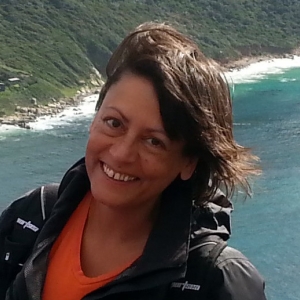Michael Christie
Learning HCI from Australian Aboriginal Elders: reflections on the collaborative design of digital knowledge technologies

Abstract: Working as an educator and linguist in remote Arnhem Land Aboriginal communities since the 1970s, and more recently as an academic in the Northern Territory, the emergence and mobilisation of digitising technologies has long been an inevitable feature of my work. In this talk I introduce a number of different collaborative design projects through which Aboriginal knowledge authorities have instantiated their own knowledge and governance practices, and reflect on some of the epistemological insights this work has produced.
Professor Michael Christie works with the Contemporary Indigenous Governance and Knowledge research group at the Northern Institute, Charles Darwin University. A fluent speaker of Yolŋu languages, he has worked for more than 40 years collaboratively with Indigenous elders and knowledge authorities researching and co-designing solutions to complex problems arising at the interface of Australian Indigenous and settler knowledge and governance practices, for example in housing and homelessness, medicine, the criminal justice system, community governance, environmental and resource management, ‘both-ways’ educational curriculum, and the intergenerational transmission of ancestral knowledge. He worked as a teacher linguist at Milingimbi and Yirrkala in East Arnhem Land in the 1970s and ‘80s and from the mid 1990s with Yolŋu elders to establish the Yolŋu studies program at CDU, which continues to attract students of Yolŋu languages and culture, taught by language owners. The program won the Prime Minister’s prize for Australia’s best university teaching program in 2005.
Richard Fuller
Reconnecting people and nature

Abstract: The world’s population is predominantly urbanised, and we are spending more and more time indoors. As a consequence, many environmentalists are alarmed about what they see as an accelerating disconnection of people from experiences of nature. The science indeed tells us that spending less time in nature impairs health and well-being, although does not seem to reduce concern about environmental conservation. While many cast technology as the evil of the piece, and see a stark trade off between screen time and green time, I argue that technology has in fact already afforded many opportunities to strengthen our connection with nature. Yet enormous prospects lurk elusively on the horizon. A deeper appreciation of the nature living around us is hampered by at least two fundamental biological difficulties – most species are very hard to perceive, being rare, small, nocturnal or all three, and identification of most taxa remains the domain of experts with years of specialist learning. Can we overcome these difficulties and others through smart interfaces between people and computers?
Richard Fuller is an Associate Professor at the University of Queensland. He studies how people have affected the natural world around them, and how some of their destructive effects can best be reversed. To answer these questions, the lab group works on pure and applied topics in biodiversity and conservation. Much of the work is interdisciplinary, focusing on the interactions between people and nature, and how they can be enhanced. Ultimately, coherent solutions to the biodiversity crisis depend on a healthy relationship between people and the natural environment.
Yvonne Rogers
Human Nature: The Good, the Bad and the Ugly

Abstract: It is well known that technology can bring out the worst in human nature. All too many of us readily succumb to some level of digital addiction – perpetually dovetailing between our apps, texts, newsfeeds, social media, games, videos, and so on – while eagerly awaiting the next batch of notifications, that give a glimpse of what is in store when we next look down at our phones. But it does not have to be so. We can also think of how technology can be engineered to bring out the best in human nature. One approach I have been pursuing is to research tech design and use that entices us to ‘look up’ and ‘look out’, and in doing so open our eyes more to see, understand and engage with the natural environment. Rather than playing into the hands of the ugly side of human nature I will talk about how HCI can tap into the good side of humankind
Yvonne Rogers is a Professor of Interaction Design, the director of UCLIC and a deputy head of the Computer Science department at UCL. Her research interests are in the areas of ubiquitous computing, interaction design and human-computer interaction. A central theme is how to design interactive technologies that can enhance life by augmenting and extending everyday, learning and work activities. This involves informing, building and evaluating novel user experiences through designing, implementing and deploying a diversity of technologies. A current focus of her work is on human-centred data and people in the Internet of Things in urban settings. Yvonne is the PI at UCL for the Intel Collaborative Research Institute on Urban Internet of Things which was launched in October 2012 as a joint collaboration with Imperial College, Intel, Future Cities Catapult and London Legacy Development Corporation. She was awarded a prestigious EPSRC dream fellowship rethinking the relationship between ageing, computing and creativity and a Microsoft Research Outstanding Collaborator Award in 2016. She is an honorary professor in the Computer Science department at the University of Cape Town. Central to her work is a critical stance towards how visions, theories and frameworks shape the fields of HCI, cognitive science and Ubicomp. She has been instrumental in promulgating new theories (e.g., external cognition), alternative methodologies (e.g., in the wild studies) and far-reaching research agendas (e.g., "Being Human: HCI in 2020"). She has also published two monographs "HCI Theory: Classical, Modern and Contemporary." and "Research in the Wild." with Paul Marshall.